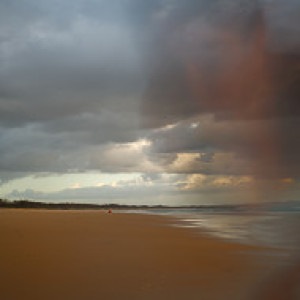Australia's New Parliament House
A few other photos of the New and Old Parliament Houses
Read on for those interested with the building's history...
In 1901, when the six British colonies in Australia federated to form the Commonwealth of Australia, Melbourne and Sydney were the two largest cities in the country, but the long history of rivalry between them meant that neither could become the national capital.
In 1909, after much argument, the Parliament decided that the new capital would be in the southern part of New South Wales, on the site which is now Canberra. The Commonwealth acquired control over the land in 1911, but World War I intervened, and nothing was done for some years to build the city. Federal Parliament did not leave Melbourne until 1927. In the meantime the Australian Parliament met in the 19th century edifice of Parliament House, Melbourne,while the Victorian State Parliament met in the nearby Royal Exhibition Building for 26 years.
After World War I the Federal Capital Advisory Committee was established to prepare Canberra to be the seat of government, including the construction of a Parliament House. The committee decided that it would be best to erect a "provisional" building, to serve for a predicted 50 years until a new, "permanent" House could be built. In the event, Old Parliament House was Parliament's home for 61 years. In the last decade of its use as a parliament the building had a chronic shortage of available space
In 1978 the Fraser government decided to proceed with a new building on Capital Hill, and the Parliament House Construction Authority was created. A two-stage competition was announced, for which the Authority consulted the Royal Australian Institute of Architects and, together with the National Capital Development Commission, made available to competitors a brief and competition documents. The competition drew 329 entries from 28 countries.
The competition winner was the New York-based architectural firm of Mitchell/Giurgola, with the on-site work directed by Italian architect Romaldo Giurgola, with a design which involved burying most of the building under Capital Hill, and capping the edifice with an enormous spire topped by a large Australian flag. The facades, however, included deliberate imitation of some of the patterns of the Old Parliament House, so that there is a slight resemblance despite the massive difference of scale.
Construction began in 1981, and the House was intended to be ready by Australia Day, 26 January 1988, the 200th anniversary of European settlement in Australia. It was expected to cost A$220 million. Neither the deadline nor the budget were met. The building was finally opened by Queen Elizabeth II on 9 May 1988, the anniversary of the opening of both the first Federal Parliament in Melbourne on 9 May 1901 by the Duke of Cornwall and York (later King George V), and of the Provisional Parliament House in Canberra on 9 May 1927 by the Duke of York (later King George VI).
New Parliament House is shown on the reverse of the Australian $5 note.
From above, the design of the site is in the shape of two boomerangs enclosed within a circle. Much of the building is buried beneath Capital Hill, but the meeting chambers and accommodation for parliamentarians are free-standing within the boomerang-shaped arms. The total size of the site is 32 hectares. The building itself is 300 m in length and width and contains 250,000 m2 of floor space.
There are 25,000 granite slabs on the curved walls which, placed end to end, would stretch 46 kilometres. The building required 300,000 cubic metres of concrete, enough to build 25 Sydney Opera Houses and has a design life of at least 200 years. The building has 4,700 rooms and has 2,416 clocks that are used for calling members or senators to a vote. On a non-sitting day there could be 2,000 to 3,000 people working there.
The flag flown from the 81 metre flagpole is 12.8 m by 6.4 m, about the size of half a tennis court. The flagpole weighs 220 tonnes and is made of polished stainless steel from Newcastle. It was designed to be the pinnacle of Parliament House and is an easily recognisable symbol of national government. It is visible by day from outside and inside Parliament House and floodlit at night. The flag itself weighs approximately 15 kg. and 3,000 original artworks are displayed in the building. The Queen's Terrace Café located on the first floor is open to both the public and Members of Parliament.
The building was designed to "sit above" Old Parliament House when seen from a distance. It was proposed originally to demolish Old Parliament House so that there would be an uninterrupted vista from the New Parliament House to Lake Burley Griffin and the Australian War Memorial, but there were successful representations for preservation of the historic building, which now houses a parliamentary museum
At the time of the construction, it was the most expensive building in the world at more than A$1.1 billion.
Geez!!! :)
- 1
- 0
- Nikon D700
- 1/100
- f/5.6
- 20mm
- 100

Comments
Sign in or get an account to comment.


